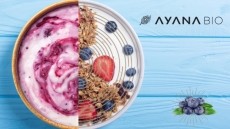New cowpea variety retains 'perfect' green color when dry, frozen
color fading faced by frozen food processors, allowing them to sell
a better looking product, say scientists.
The new variety, which is in its final stages of development, is due to become available for planting this spring, and is likely to hit the food production market next year, say scientists at the US Department of Agriculture's (USDA's) Agricultural Research Service (ARS).
The Greenpack DG 'double-green' pea developed by ARS geneticist Richard Fery and his colleagues is designed to maintain a "perfect shade of green" , even when dry. The reason for this is that it combines two unrelated genes that both allow the pea's green color to persist after the bean is dried.
The new variety is an improvement on the team's earlier pea, Chaleston Greenpack, which currently claims to be the leading black-eyed pea cultivar being packed by frozen food producers.
Charleston Greenpack was developed in 1993 by the ARS's US Vegetable Laboratory (USVL), in collaboration with Western Seed Multiplication, a major grower of black-eyed peas.
The black-eyed pea, also known as southernpea, cowpea and crowder pea, was traditionally harvested by hand when it was fresh, at which stage it was still green. However, today the peas are harvested using grain combines, and as it remains very expensive to mechanically harvest fresh peas, they are now left on the plant to dry out.
But because the pea plant must be very dry in order for the grain combine to properly harvest the crop, growers apply a special chemical to the plant in order to dry it out, explained Fery.
"Once the chemical is applied, the pea cannot be harvested for seven days. This waiting period can cause some color loss or fading, which is a production problem that has been encountered with Charleston Greenpack," he told FoodNavigator-USA.com.
But Greenpack DG now claims to have a more persistent color, as it combines the 'green cotyledon' (gc) gene used in Charleston Greenpack together with a 'green testa' (gt) gene, which imparts a green seed-coat color that persists in the dry seed.
The work of Fery and other USVL scientists has recently been boosted by the opening of a $20 million facility in Charleston in 2003, which the ARS shares with Clemson University scientists.
According to Fery, the new facility has provided them with the necessary tools to continue work on the development of new and improved pea varieties.















